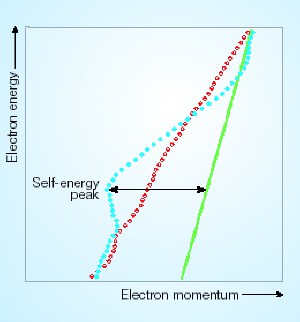Theorists have put forward many theories to explain high-temperature superconductivity in materials containing layers of copper oxide. A team of experimenters from McMaster University in Canada and the Brookhaven National Laboratory in the US has now ruled out two of these theories and presented new evidence that magnetic correlations between pairs of electrons is responsible for superconductivity in the cuprates (J Hwang et al. 2004 Nature 427 714).

Superconductivity is the complete absence of electrical resistance in a material and is observed in certain materials when they are cooled to below their superconducting transition temperature. Physicists agree that superconductivity relies on getting electrons to overcome their mutual Coulomb repulsion and form “Cooper pairs”. In the Bardeen-Cooper-Schrieffer (BCS) theory of low-temperature superconductivity, the electrons are held together as a result of their interactions with phonons – lattice vibrations – in the material.
However, the BCS theory can not explain the behaviour of high-temperature superconductors – which were discovered in 1986 and can have transition temperatures as high as 138 Kelvin. Now, Thomas Timusk of McMaster and colleagues have measured the optical self-energy spectrum of a bismuth-based cuprate superconductor known as Bi-2212. The McMaster-Brookhaven team found that the spectrum was broad and featureless above 88 Kelvin, the superconducting transition temperature of the material. However, a sharp peak appeared in the spectrum below this temperature (see figure).
According to the team, the results rule out theories based on phonons and the creation of a magnetic resonance state in the material, but they are consistent with the “magnetic-pairing” model of high-temperature superconductivity. “The results show that the magnetic resonance that has been the subject of a large number of recent papers does not by itself cause high-temperature superconductivity,” says Timusk. “Moreover, a hypothetical phonon at the same energy as the magnetic resonance cannot be the cause either.”
Timusk adds that the team’s approach could be used to analyse excitations in a wide range of other high-temperature superconductors and “exotic” materials.



